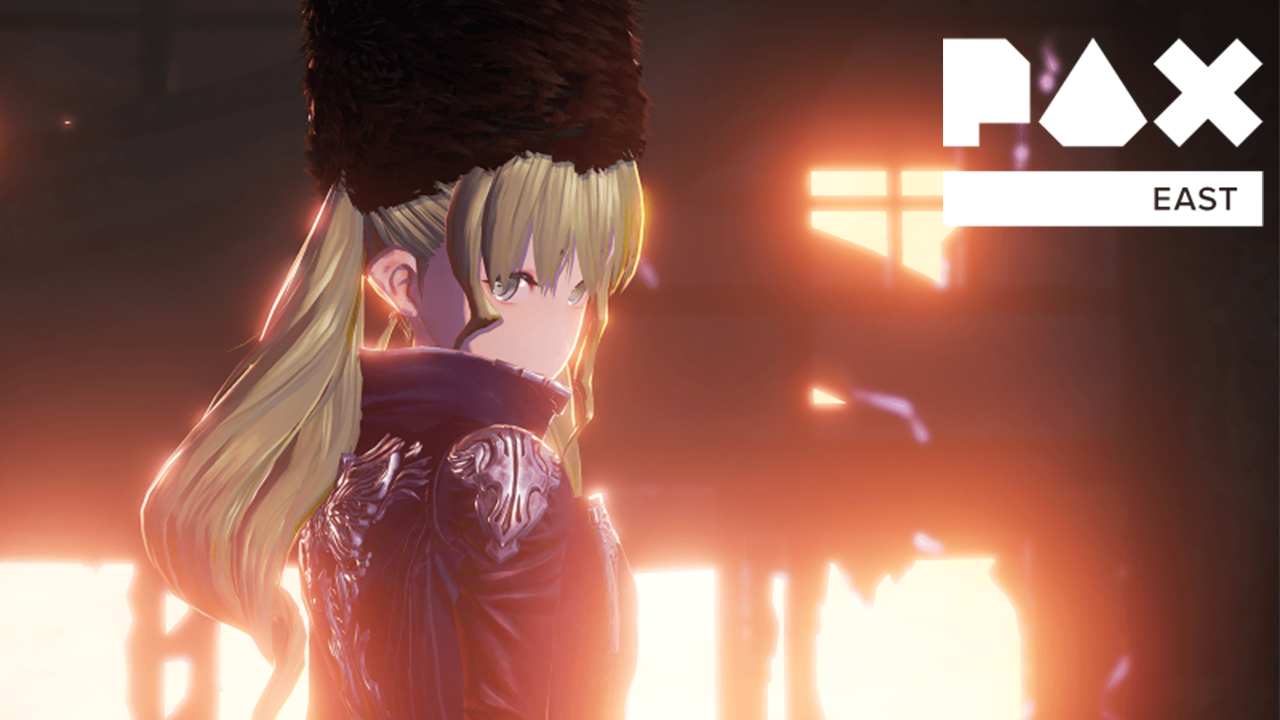I think to start off by saying, “Okay, Code Vein is kind of anime Dark Souls” can come off as too reductive. And to some extent, it is. But I think to get you in the headspace of what Code Vein is trying to pull off it’s effective. It’s setting out to be a flashier action game with the same kind of heart: brutal difficulty and lessons through death.
While on their own this sounds like a bit of a knock-off, I can’t reiterate enough just how much Code Vein’s style and charm went in the brief amount of time I spent with it. The demo was a guided section through and underground cavern with some spooky looking enemies, which on its own has a very Souls-like sound to it, but it served as a great introduction to the enemies and abilities that separate Code Vein from its comparisons.
 First and foremost, I played my entire demo with a companion, a party member, named Mia, who has been a huge part of much of the advertising for the game. She had some ability to heal me if I fell in battle (which happened often) and also generally held her own in combat. It was a completely different feel than, say, a summoned ally in Dark Souls. It felt more like a companion character in an RPG, that stands with you. What’s important is Mia had her own health and healing items, and while she could heal you, I didn’t notice anyway to aid her. She could die independent of you, and she’d rejoin you at the next rest point. These rest points you can “kindle” in a way, by lighting them, and then rest at them to fast travel, level up, and of course reset all enemies.
First and foremost, I played my entire demo with a companion, a party member, named Mia, who has been a huge part of much of the advertising for the game. She had some ability to heal me if I fell in battle (which happened often) and also generally held her own in combat. It was a completely different feel than, say, a summoned ally in Dark Souls. It felt more like a companion character in an RPG, that stands with you. What’s important is Mia had her own health and healing items, and while she could heal you, I didn’t notice anyway to aid her. She could die independent of you, and she’d rejoin you at the next rest point. These rest points you can “kindle” in a way, by lighting them, and then rest at them to fast travel, level up, and of course reset all enemies.
The gameplay itself takes a lot of hints from a slower paced action game, but it was definitely faster than Dark Souls specifically, finding a spot somewhere between that and a Devil May Cry. Light and heavy attacks were mapped to face buttons, but guarding and parrying were on your left shoulder buttons, and the combo reminded me both of Bloodborne, and also specifically of Nioh, which opted for a similar setup.
 Running up and comboing between light and heavy attacks felt natural and responsive, with a big emphasis on a frain ability, where your bloody hand turned massive and clawed directly at the enemy. This allowed you to gain more of the currency you earned for killing enemies it seemed, and it felt like a good finisher to any string of combo attacks.
Running up and comboing between light and heavy attacks felt natural and responsive, with a big emphasis on a frain ability, where your bloody hand turned massive and clawed directly at the enemy. This allowed you to gain more of the currency you earned for killing enemies it seemed, and it felt like a good finisher to any string of combo attacks.
There were an excessive amount of special moves, all activated by holding the right trigger and hitting either a direction on the D-pad or one of the face buttons. There were eight to see, and while I didn’t see all of them, I’d compare them to specials from something like a Tales game; big area of effect attacks that seemed to have limited uses, kind of like spell slots.
 While I know the comparisons to Dark Souls aren’t in short supply, I still think the aesthetic brought something fresh to Code Vein. It’s aesthetic reminded me a lot of Tales, and that’s a huge plus for me. I was able to jump to a big boss fight right at the end, and it was about as massive and brutal as you’d hope from a game harkening to this style of gameplay. Having a companion definitely took a slight load off, but the difficulty was still there throughout. It was a blast, overall, and seemed like the kind of try, die, and try again game that other Souls fans like me would really enjoy, with its own unique take on the look and feel of the genre.
While I know the comparisons to Dark Souls aren’t in short supply, I still think the aesthetic brought something fresh to Code Vein. It’s aesthetic reminded me a lot of Tales, and that’s a huge plus for me. I was able to jump to a big boss fight right at the end, and it was about as massive and brutal as you’d hope from a game harkening to this style of gameplay. Having a companion definitely took a slight load off, but the difficulty was still there throughout. It was a blast, overall, and seemed like the kind of try, die, and try again game that other Souls fans like me would really enjoy, with its own unique take on the look and feel of the genre.
All we know for now is that Code Vein is releasing sometime this year, and I’ll be here for more info on it when it does.






